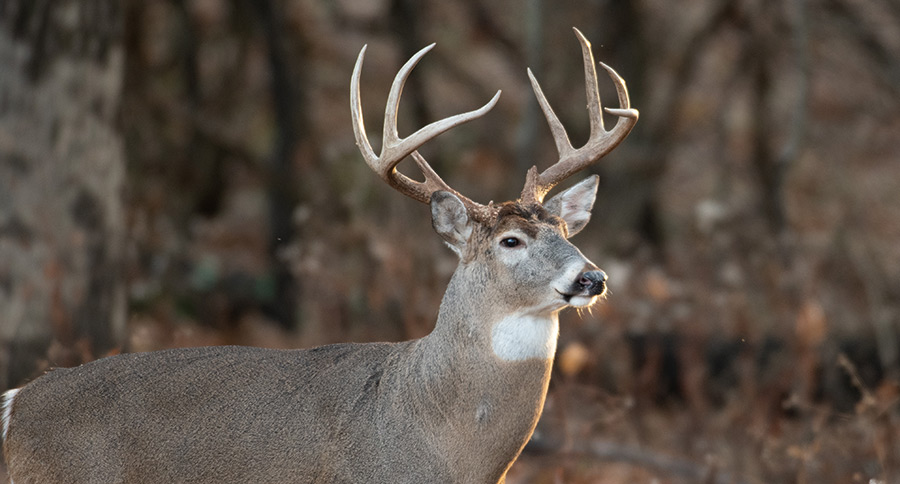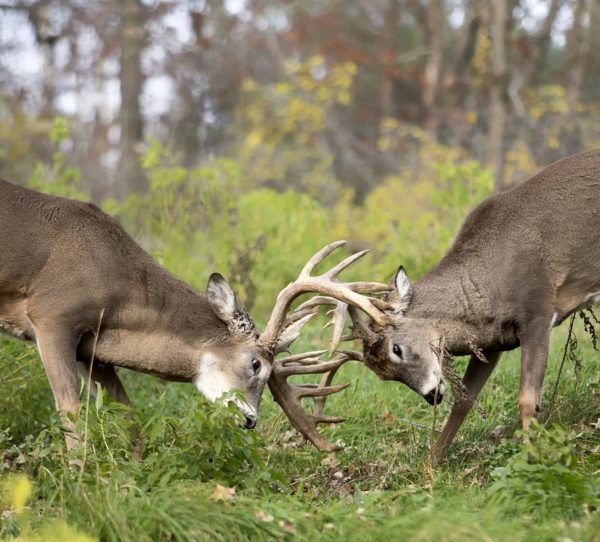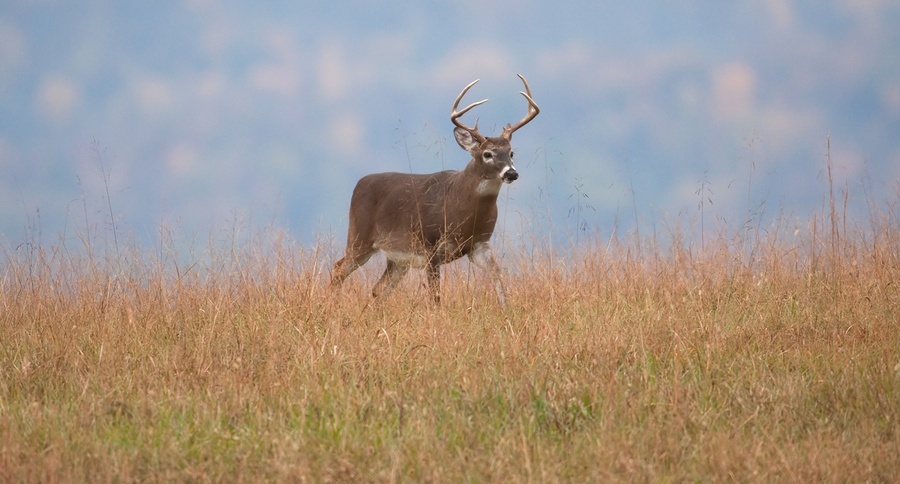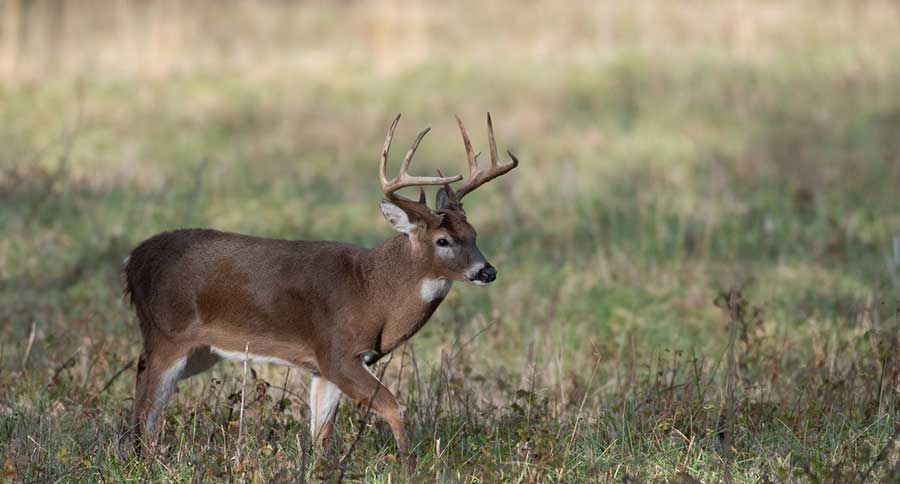Here are 10 takeaways from the 2019 QDMA Whitetail Report.
Every year the Quality Deer Management Association compiles data from state and provincial agencies detailing trends in deer hunting.
For example, the staff at QDMA outlines antlered buck harvest, age structure of buck harvest, antlerless deer harvest, deer harvest by weapon type, and more. The Whitetail Report is rich with content related to whitetails across their home ranges. Most of this data, however, is not from the previous season but the season before.
In other words, the data listed below is from the 2017 hunting season rather than the 2018.
But it's as relevant info as there is, and well worth investigating.
1. Antlered Buck Harvest in Texas is Astonishing
The state of Texas led the way harvesting the most antlered bucks, which totaled 506,809. Texas far surpassed any other state with Michigan, Pennsylvania, Wisconsin, and Georgia rounding out the top five.
It makes sense with how big Texas hunting (and the state itself) is, yet it practically doubled the state of Michigan's antlered buck harvest.

2. Yearling Buck Harvest is Decreasing
In 1989, 62 percent of bucks harvested in the United States were yearling bucks. In 2017, that number was 35 percent. However, some individual states are leading the way with even lower yearling buck harvest numbers. In 2017, Arkansas saw that a mere 7 percent of antlered bucks harvested were yearlings. Mississippi followed with 11 percent, Louisiana with 13 percent, Alabama with 14 percent and Florida with 17 percent.
On the contrary, Wisconsin led with the highest percentage of yearling antlered bucks harvested at 65 percent. New Hampshire, Maryland, New York and Virginia rounded out the top five.

3. Mississippi Leads Adult Buck Harvest
When we reference adult buck harvest we will refer to 3.5-years old or older. The state with the highest percentage of 3.5-year old bucks or older harvested in 2017, was Mississippi at 77 percent. If you think about it, that's remarkable.
In other words, three out of four bucks harvested in Mississippi were at least 3.5-years of age. Arkansas, Louisiana, Oklahoma, and Texas all were in the top five. Might I add they were all 60 percent or higher.
Again, Wisconsin maintained the lowest percentage of 3.5-year old bucks harvested at 12 percent with New York, Vermont, Tennessee, and Michigan all in the bottom five.
4. Texas Dominates Antlerless Harvest
The state that recorded the most antlerless harvest was Texas. Texas reported 411,200 antlerless whitetail harvests in 2017. Georgia followed suit with 242,205 antlerless harvest. Pennsylvania, Wisconsin, and Michigan rounded out the top five.
Maryland reported 93 antlerless harvests per 100 deer hunters. Delaware maintained the highest ratio for anterless deer per antlered buck harvest at 2.0 with Georgia and Maryland at 1.7.

5. The Antlerless Age Structure is Intriguing
Texas again made headlines with the lowest percentage of fawns in antlerless harvest at only three percent. North Carolina was number five at only 11 percent. Ohio boasted the highest percentage of fawns harvested at 38 percent.
Once again, Texas yielded 61 percent of antlerless deer harvested that were 3.5-years old or older. The nationwide average stated that 40 percent were 3.5-years old or older, 21 percent 2.5-years old, 19 percent 1.5-years old and 20 percent were fawns.
6. Archery Harvests vs. Archery Participation
Archery harvests which includes bows and crossbows tallied 23 percent of all harvests nationwide in 2017. The state with the highest percentage of archery harvests was New Jersey at 58 percent. Kansas was number five with 37 percent.
Interestingly, the state with the highest number of bowhunters was Pennsylvania with 339,600 reported bowhunters.

7. Two-Thirds Were Rifle and Shotgun Harvests
Rifle and shotgun harvest reports accounted for 66 percent of harvests nationwide, with Idaho and Wyoming being the highest. The two states each reported a 95 percent harvest with a rifle or shotgun.
Nebraska reported 90 percent. South Carolina reported 89 percent. Maine, North Dakota, and Texas all reported 88 percent.
8. Tiny Rhode Island Leads Muzzleloader Harvest Percentage
Muzzleloader harvests tallied 10 percent of the harvests nationwide with Rhode Island reporting the highest with 42 percent of their harvests coming with a muzzleloader. Virginia claimed 26 percent of its harvests were with a muzzleloader.
Utah and Vermont reported 23 percent, and Massachusetts and New Hampshire reported 22 percent.

9. Chronic Wasting Disease Remains a Problem
Chronic Wasting Disease has now been positively identified in whitetails and other deer species in 26 U.S. states, four Canadian provinces, Korea, Norway, and Finland.
CWD currently can infect squirrels and macaque monkeys through controlled scientific conditions. Similarly, pigs and mice that carry human genes have also been known to carry prions but are asymptomatic. Primates also show evidence of potential infection from consuming infected venison in ongoing research.
There's still a lot we don't know, but we're making strides in the containment efforts and investing time and money into finding a solution. Let's just hope things don't get much worse.
10. Pennsylvania Tops Deer-Vehicle Accidents
The top state with deer-vehicle accidents in 2017-18 was Pennsylvania, which reported 141,777 deer-related accidents on its roadways. That shakes out to 0.57 deer-vehicle accidents per road mile.
QDMA recommends balancing deer herd management with habitat preservation, and making motorists aware during spring fawning and fall breeding periods that a deer on the road is a common occurrence. We wholeheartedly agree.

Final Thoughts
Not all state agencies report data the same. Similarly, not all agencies report every item listed in the Whitetail Report.
Regardless of the info they're working with, the QDMA does a good job summarizing everything they can get their hands on.
They also break down every state, so if you're state is not listed in any of the categories we mentioned, check out the Whitetail Report and see where it fell into the percentages.
There is so much more information regarding advocacy, research, education and recruitment that we couldn't fit in this article. We encourage everyone to take time to view this great resource.
Like what you see here? Read more hunting articles by Nathan Unger at whitetailguruhunting.com. Nathan is also the host of the Whitetail Guru Hunting Podcast.
NEXT:WATCHING MINK HUNT MUSKRATS MIGHT BE THE COOLEST THING YOU'VE SEEN ALL WINTER





